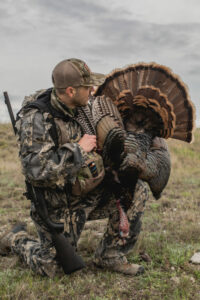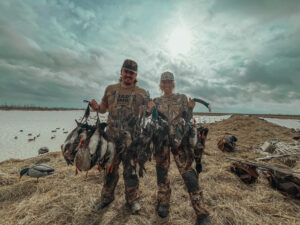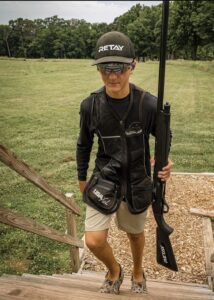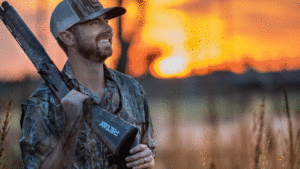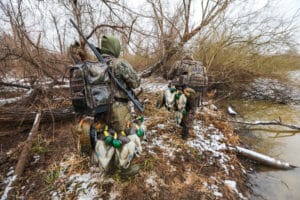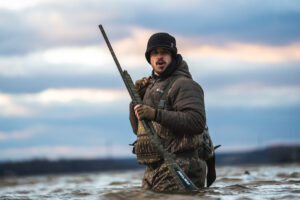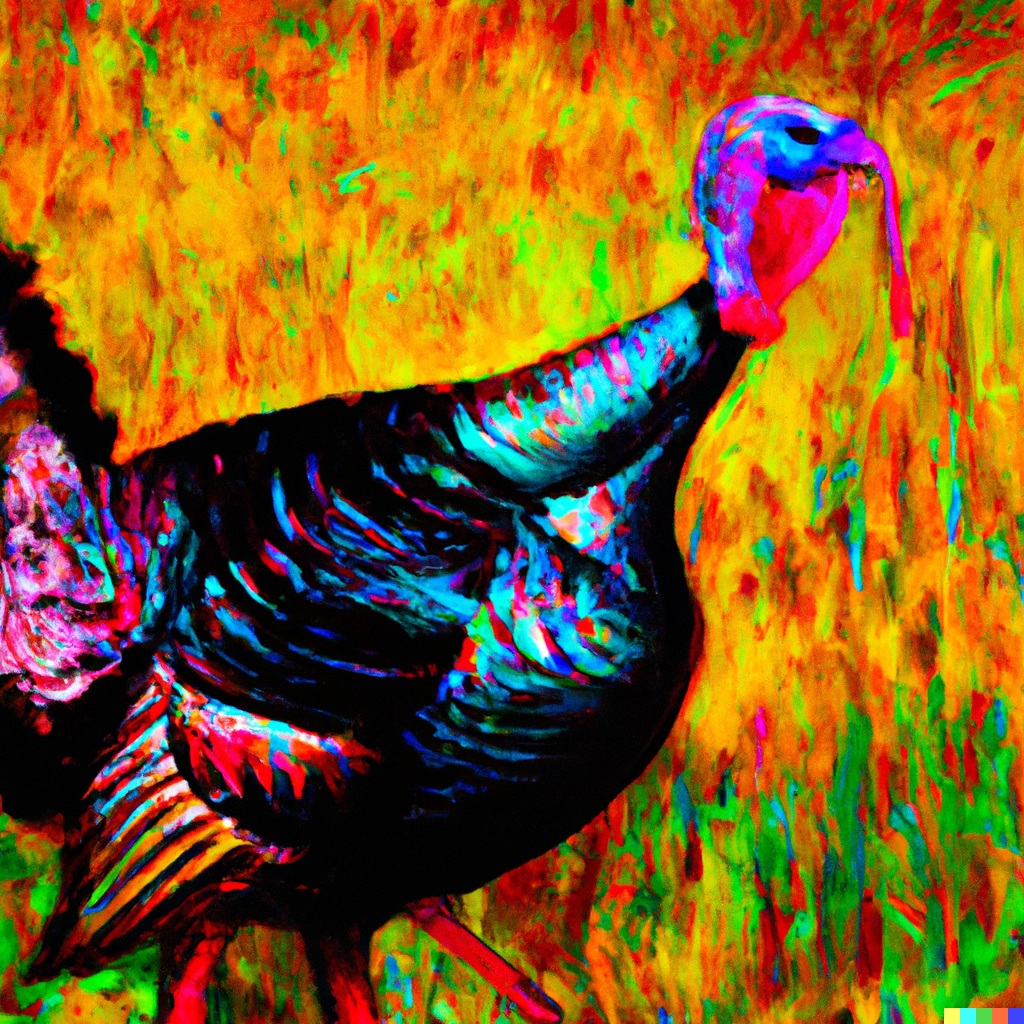
Part 2
By: Bill Grabinski

Colonel Tom Kelly, author of the famed turkey hunting book “Tenth Legion”, once said you pay for every turkey and the coin you use is time.
And time scouting means more than wandering aimlessly or listening for gobbles. We’ve covered the basics of finding turkeys, but it’s time to dive deep and figure out how to use your intel to move like a ninja through the spring woods and know turkeys better than they know themselves.
And at the end of the day, knowing turkeys is what separates rookies from the guys who make it look easy year after year.
The Turkey’s Perspective
We’ve talked about knowing the land so you can move quietly and efficiently, but that’s only half the equation.
But how do turkeys use it to their advantage?
Without a doubt, one of the biggest mistakes turkey hunters make is rushing to get in position without taking the time to evaluate if they’re in a spot the turkey wants to come to. The average hunter hears a gobble and heads straight at the bird, regardless of what lies in between. But even the most effective turkey calling strategies for spring fall on deaf ears when they come from a strange location. The truth is the best approach often involves taking a longer route to put yourself where you either expect the bird to end up or at least a place he’s willing to go.
While nothing is set in stone with wild turkeys, the more you know about the land the better off you’ll be. And while it’s usually safe to assume birds prefer an open hardwood bottom over a brush-choked fallow field, it’s critical to understand how their outlook and habits change throughout the year.
And always keep an open mind.
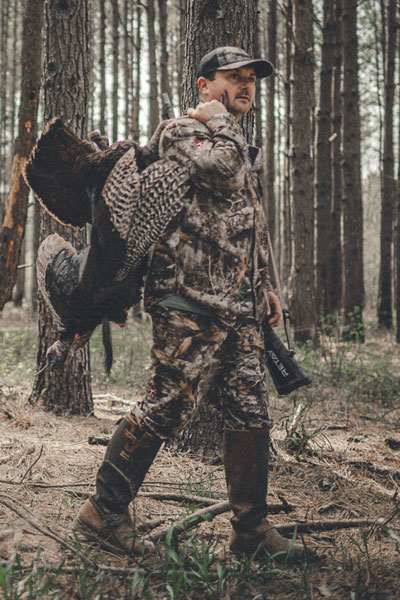
Sure, they love nothing more than roosting along a creek with fresh green shoots growing among towering roost trees. But that same creek bottom could be an impenetrable jungle during the last week of the season. And those fields with tall trees and brushy areas, you never saw a turkey all of last season? It could be one of those underrated turkey hunting locations this spring. There’s a good chance a hen has a nest in there now…and that a longbeard isn’t too far away each day.
This is where time scouting teaches you more about the bird itself than anything else. And it ultimately drives your success during the spring season – far more than the latest call or the most realistic decoy.
The Lay of the Land
We hear this term all the time, and for good reason. Whether we like to admit it or not, the fact that turkeys know the land better than us saves them more than anything. And as much as they want to breed the hen making all those yelps from the side of that ridge, their desire to stay alive trumps everything else.
It’s the reason longbeards like to hang up at 80 yards or never crest the ridge you’re calling from. They’re putting themselves in a position to live another day.
Learning the lay of the land seems simple enough, but there are two sides to it. You need to know the land so you can stack the odds in your favor by anticipating how and why turkeys move. You’ve put boots on the ground, scoured digital maps, and listened closely for the telltale signs of spring. It’s time to close in undetected.
Knowing where turkeys want to be puts turkey nuggets on the menu, but you’ve got to know the best ways to get there. This is especially key when you’re looking to increase your spring turkey hunting opportunities on public land, since most hunters are going to take the same routes over and over to get to gobbling birds.
You’ve gotta take the intel you’ve gathered and start dissecting the land on foot.
For example, let’s say you’ve got a hardwood ridge where you expect gobblers to roost when the season opens. Put yourself in the driver’s seat and figure out a way to slip in there undetected. This is where boots on the ground gives you a huge advantage – you’re able to find the most efficient ways to move easily and quietly across the landscape. And these aren’t usually obvious through digital scouting. This could mean deer trails beaten down to bare dirt, seasonal creeks where leaves are washed away, or old dirt bike trails free of brush.
Again, you want to pay close attention to topography, and not just major elevation changes. A longbeard’s eyes rarely betray him, but he still can’t see through the side of a hill or an impenetrable wall of brush. While these obstacles often hang up gobblers coming to a call, they can be an ally when it comes to slipping in close before making a calling sequence.
And you need to know the land to figure these features out.
If you’re in open country, it can be tempting to do all your scouting from a road with optics but don’t fall into this trap. This can be some of the most deceiving country out there. What looks like a flat ag field often turns out to be a maze of micro topographical changes. This could include tractor tire tracks big enough for a grown man to slip into position or dips in the field where turkeys remain hidden in plain sight for hours.
Never take a fenceline at face value either. What you thought would give you a secret approach to a group of roosted birds may end up being so choked with brush a housecat can’t slip by. Or it could be an open strip of woods with absolutely no cover. The silver lining is that many of these fencelines have ways to move…as long as you know they exist. This includes four-wheeler trails, deer trails, or ditches you can walk along.
Every once in a while you come across one of those secret spring turkey hunting hotspots. Maybe it’s a giant oak tree in a strut zone or the corner of a field where birds feed each afternoon. If you can sneak in and assess potential setups, don’t hesitate to grab some broken limbs or brush and place them so you have cover when you come back during the season. Longbeards like to strut in open areas and this means cover in front of nearby trees can be hard to come by. Adding concealment ahead of the hunt could mean the difference between hearing an alarm putt at 45 yards or a shotgun blast and flopping wings. Heck, you can even put up a ground blind if that’s your thing.

This next piece of info could be the most critical to gather as you cover ground.
You want to look for any obstacles that could keep a bird from finishing to the call. This includes creeks, fences, big blowdowns, thick brush, or ponds. While they’ll sometimes surprise us and fly across a river to get to a call, never doubt the power of small obstacles. After all, single strands of old barbed wire have saved the lives of countless gobblers over the years. And those definitely aren’t visible from satellite imagery.
Since we’ve brought up satellite imagery and come full circle, let’s wrap this up. Boots on the ground is your opportunity to get ahead of most hunters who solely rely on remote scouting. As dependent as we’ve become on technology, the person who knows the land always has the upper hand. And you’ve got the info you need to find birds and the roadmap to figure them out.
It’s up to you to take the next steps and get out there.

